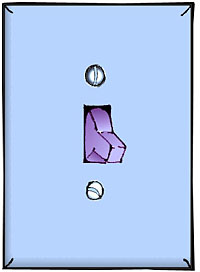
(Source: Cooperative Research Centre for Sustainable Rice Production)
|
1. You'll hardly feel a thing.
The chip is housed in a glass
capsule the size of a grain of rice that is inserted just under your skin
by syringe and removed with a tiny sclpel slice. Only massive blunt-force
trauma can shatter it. |
2. There's no on/off switch.
The chip is activated by a same-brand
RFID reader passing within one to two feet, the only info stored on it is
an ID number for a password-protected database, to which you control
access. So far, the chips lack GPS capability so you can't be
tracked. |

(Source: U.S. Environmental Protection Agency) |
 
(Source: Consumer Action and Bioscrypt) |
3. It can save your life . . .
The database the chip is linked to
can hold anything from your medical history (so ER doctors could just scan
your arm to learn your drug allergies) to access rights for secure
buildings (a feature already being used by the Mexican
government). |
4. Or it can just get you drunk.
The Baha Beach Club in Barcelona
lets customers get chipped for $150. Bartenders scan implanted
patrons' arms to get their credit card info and to let them into the VIP
lounge. |

(Source: Online Guide to Barcelona) |

(Source: The Lassie Network) |
5. Fido is one step ahead of you.
VeriChip, the company that makes
the human-implantable chips, has already put them in more than 30 million
dogs, cats, livestock and other wild animals. Every month about 6,000 lost
pets are reunited with their owners when shelters scan the
chips. |





